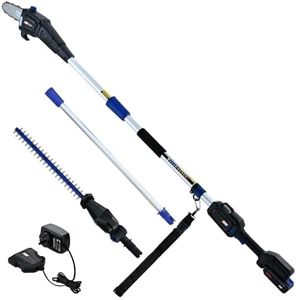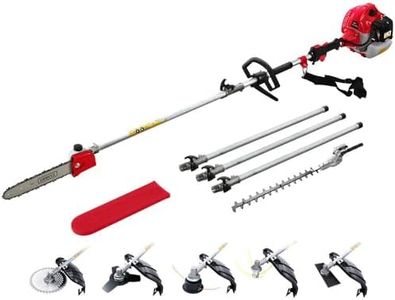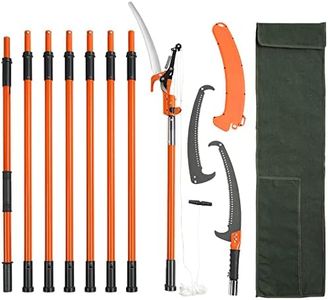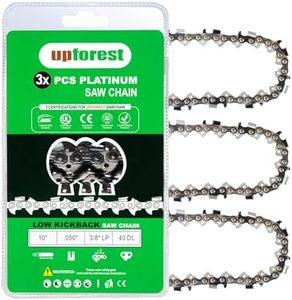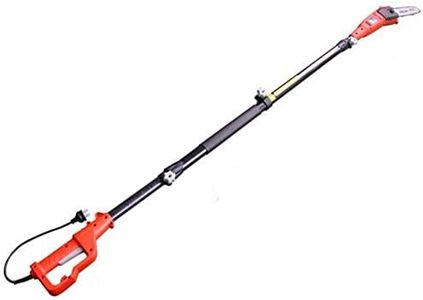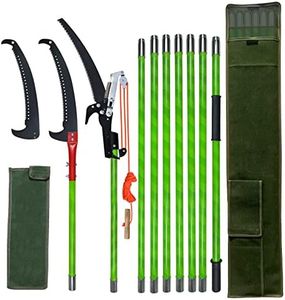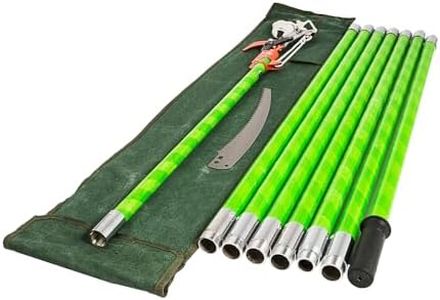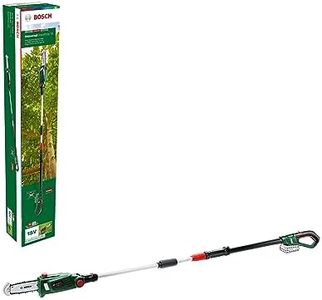We Use CookiesWe use cookies to enhance the security, performance,
functionality and for analytical and promotional activities. By continuing to browse this site you
are agreeing to our privacy policy
10 Best Pole Saws
From leading brands and best sellers available on the web.By clicking on a link to a third party's website, log data is shared with that third party.
Buying Guide for the Best Pole Saws
Choosing the right pole saw is all about matching the tool to the type of tree trimming or pruning tasks you expect to tackle. The perfect pole saw makes cutting branches safer and easier, letting you reach high spots without climbing a ladder. It's important to understand the main features that make each pole saw unique, so you can pick one that fits your trees, your physical abilities, and how often you plan to use it.Power SourcePole saws come in three main types: manual, electric (corded or battery-powered), and gas-powered. Manual pole saws rely on your own strength and are usually lighter, making them a good choice for occasional light trimming. Electric pole saws are more convenient for quick jobs and quieter to operate. Corded models require an outlet nearby, while battery-powered ones give you more movement but have limited runtime. Gas-powered models are best for heavy-duty use and cutting thick branches, but they are heavier and noisier. The best power source for you depends on the size and type of trees in your yard and how much trimming you'll do.
Pole LengthPole length determines how high you can reach without a ladder. Adjustable poles offer flexibility, often extending from around 6 feet up to 12 or even 16 feet. Shorter poles are easier to control and less tiring, ideal for low branches. Longer poles let you reach taller branches but may feel heavier and more difficult to maneuver. Consider your tree height and your own reach when deciding on the pole length you need—pick a pole that reaches slightly higher than your tallest regular pruning task for safety and convenience.
Cutting Bar LengthThe cutting bar is the part of the pole saw that actually does the cutting, and its length (usually between 6 to 12 inches) limits the size of branches you can trim in one pass. Shorter bars are easier to control and handle, making them good for small branches and precision work. Longer bars let you cut thicker branches quickly, but add weight, which may be challenging for some users. Think about the average branch diameter in your yard—a good rule is to have a bar that's at least 2 inches longer than most branches you plan to cut.
WeightWeight affects how comfortable and safe a pole saw is to use. Lighter pole saws reduce fatigue and are easier to control, especially when you need to hold them above your head. However, lighter saws may lack power for very large branches. Heavier saws are generally more powerful but can tire you out quickly. Consider your own strength and endurance, as well as how long you'll be working at a time, to pick a pole saw weight that you can manage easily and safely.
Ease of Use and Safety FeaturesSome pole saws offer helpful features like automatic chain lubrication, tool-less chain tensioning, or anti-vibration handles, making operation smoother and safer. Look for safety features such as secure locking poles, non-slip grips, and blade covers. If you're a beginner, these features can add a lot of confidence and reduce the risk of accidents. Choose features that match your comfort level and make it easier for you to work efficiently and safely.
Maintenance RequirementsDifferent types of pole saws require different levels of maintenance. Manual and electric models usually need less frequent care, mostly regular cleaning and occasional sharpening or oiling. Gas-powered saws require more regular maintenance like fuel mixing, engine cleaning, and periodic checks. If you prefer low-maintenance tools or have limited mechanical experience, a manual or electric pole saw could be more suitable for you.
